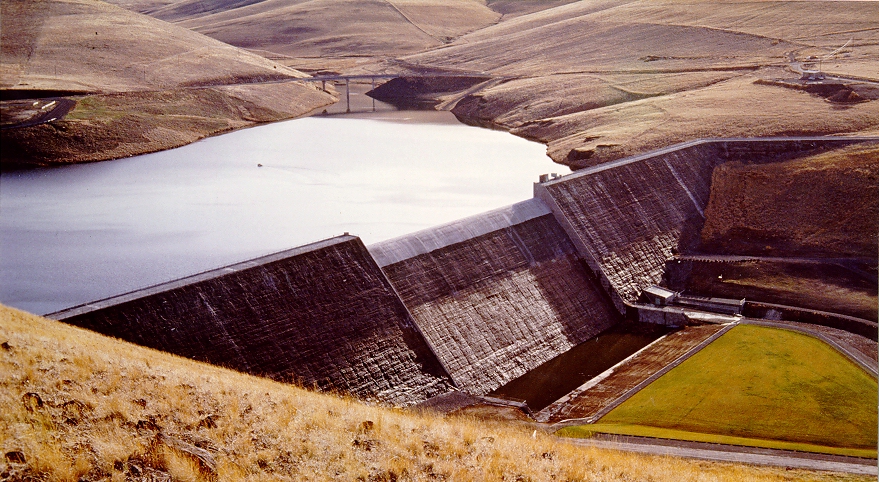Willow Creek Dam is a dam in Morrow County Oregon, located just east of Heppner’s city limits. It is the first major dam constructed of roller-compacted concrete.
The dam’s drainage basin is 96 square miles (250 km2) of arid rolling hills in the lower basin but with headwaters in the northern Umatilla National Forest. The dam’s original purpose was primarily to store water for flood control, but also to serve recreation, fish and wildlife, and irrigation uses. The dam impounds Willow Creek to create Willow Creek Lake.
The lake level can be a maximum of 2,113.5 feet (644.2 m) elevation and a minimum of 2,063.0 feet (628.8 m) for a total usable storage capacity of 9,765 acre feet (12,045,000 m3).
The dam was constructed by the Army Corps of Engineers between November 1981 and February 1983. Construction completed nearly on schedule, despite the workers initially being unfamiliar with the materials, processing, and techniques. It came in less than its budget of $50 million at $35 million. The dam’s construction validated economic and construction speed benefits where 330,000 cubic meters (430,000 cu yd) of concrete were finished in less than five months at about $17 per cubic meter ($13/yd3), which includes additional efforts to correct defects.
However, as soon as the lake began filling, significant leakage was evident through the seams of the layers of concrete. The lake was drained and a $2 million remedial effort included injecting grout through bores drilled from top to bottom. The initial rate of leakage was 33 cubic meters per second (1,200 cu ft/s). After remediation, the leakage was less than 11 cubic meters per second (390 cu ft/s). Concern over the dam’s safety has continued, especially with the memory of the 1903 flash flood.
Within a few years of construction, problems were noted with stratification of the water and anoxic decomposition producing hydrogen sulfide. Concerns were expressed that this could in turn give rise to sulfuric acid leading to concrete damage. Controversy continued for some years and the handling of the problem itself was criticized. In 2004, an aeration plant was installed to address the root cause, as had been called for 18 years earlier. Subsequent controversy surrounded the politics of a small town being used as an experiment for new construction technology. SolarBee devices to circulate the water were installed in 2009.
The dam won an American Society of Civil Engineers (ASCE) award in 1985.





0